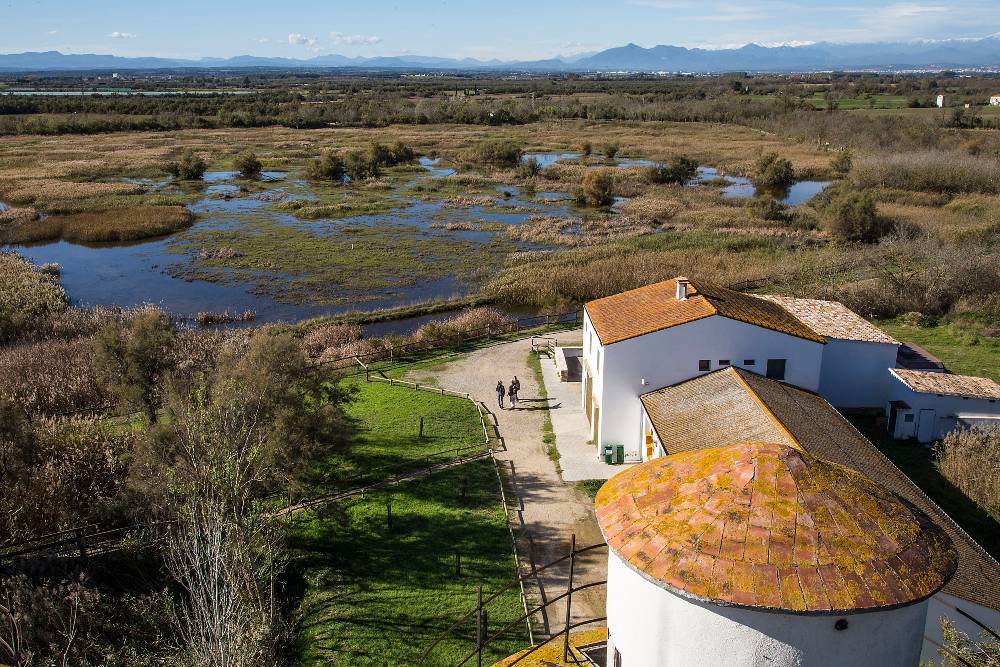Spain: Thirteen reasons why Cantabria is the star destination of the year
Nature: six incredible routes through the landscapes of emptied Spain
In addition to its beaches and coves in the heart of the Costa Brava and its cultural heritage such as Ciudadela or the Castillo de la Trinitat, the municipality of Rosas adds a natural area and two natural parks: the Paraje de la Albera and the parks of
Cabo de Creus
and the
Marismas of the Empordà
(or Aiguamolls de l'Empordà).
Crouching in the southern area of the immense bay of Rosas, the Marismas del Ampurdán Natural Park is the second most important wetland in Catalonia after
the Ebro Delta.
A place that invites you to a getaway in which to enjoy fresh and relaxed air walks between
lagoons and ponds
, admiring more than 300 species of birds, many of them protected, of which a third regularly nest: storks, ducks, flamingos, partridges, crows, seagulls, cuckoos ...
All of them can be admired from different viewpoints, since the marshes, located between the mouths of the Muga and Fluvià rivers, bring together a great variety of well-differentiated ecosystems, such as lagoons, ponds, beaches, sandy areas, brackish meadows and even an island, Caramany .
In this natural park there are more than 300 species of birds.
Ideal for a
family getaway
in which to admire and enjoy nature in its purest form, the park is divided into
nine routes:
From Cortalet to more than Matà (2.5 km).
It can be done on foot and is accessible by wheelchair.
A very
short but intense tour
in which you can admire a large part of the park's habitats and birds at five observatories: Quim Franch, Gantes, Daines, Pallejà, Closa del Puig-pond of Matà and more of Matà.
From mas del Matà to the coastal lagoons or 'llaunes' (2.3 km).
It is also adapted for wheelchairs.
It runs along the
coastline
of the park, from the shallow and freshwater marshes to the beach, bordering the Massona lagoon.
Of its five observatories, the towering Senillosa tower stands out.
The other four are: Closa del Puig, Gall Marí, Bruel and the tower on the beach of Matà.
Surroundings of the Integral Reserve of the 'llaunes' (8.2 km).
It is the third longest.
It can be done on foot or by
bicycle
and it runs along a coastal strip with almost intact vegetation of sandy and saline soils.
It has several observatories, of which the Aguait de la Roguera and the Can Comes beach stand out.
From Cortalet to the Europa ponds (4 km).
It can be done on foot and by bicycle, and links two wetlands and an agricultural plain, crossing the Europa ponds, of artificial origin, at the end, ending at the
wooden pedestrian bridge
over the Muga river.
There are also six viewpoints: Quim Franch, Roncaires, Túries, Miloques, Capons and Bernat de Berriach.
River Fluvià (1.5 km).
It is the shortest.
On foot or by bicycle, it runs along the left bank of the river.
The highlight of it is the great diversity of flora, especially the
orchids
, and the riverside forest.
All this, in the vicinity of the town of Sant Pere Pescador.
Vilaüt (2 km).
On foot or by bicycle.
This lagoon that has its greatest splendor in the flowering season of
yellow lilies and buttercups,
which coincides with the arrival of summer birds.
The highlight is its observatory, the first to be built in Catalonia for bird watching, in 1983.
From Mas del Matà to Cortalet (2.5 km).
Literary itinerary that can only be done on foot.
A more poetic than natural walk under the protection of texts chosen from the work of
Mª Àngels Anglada,
in a dozen recesses or pauses, according to each theme.
Route of the ponds (32 km).
This
circular
itinerary
from Castellón de Ampurias to Palau-Sabardera is the
longest
and recommended by bike.
Apart from its varied natural ecosystems, it allows you to admire two of the oldest hermitages in the park: Sant Antoni and Sant Joan del Erms.
The point of origin and end is the Cortalet (Park Information Center).
Natural Route of the Fluvià (8.6 km).
Circular, along the south bank of the river, on foot or by bicycle (the most recommended).
Starting and ending in Sant Pere Pescador, it borders the right bank of the river, leading to its gorge and the dune area of the beach.
From this itinerary you can see the island of Caramany.
According to the criteria of The Trust Project
Know more
Catalonia
Europe
Spain
tourism
Lithuania is the most surreal Christmas tree in Europe
InterviewPablo Casado: "The PP now represents the moderate social democrats better than Sánchez"
DiscoverFive destinations that defy the pandemic and open their borders to tourists
See links of interest
Check Lottery
Club Joventut de Badalona - Hereda San Pablo Burgos
UCAM Murcia - Monbus Obradoiro
Leeds United - Burnley
Iberostar Tenerife - MoraBanc Andorra
Baxi Manresa - Herbalife Gran Canaria

